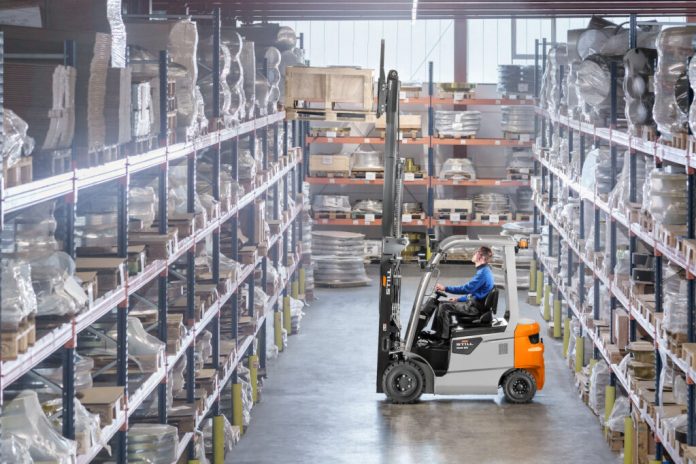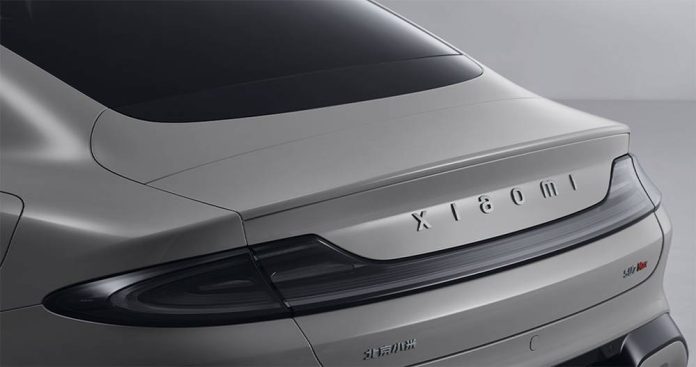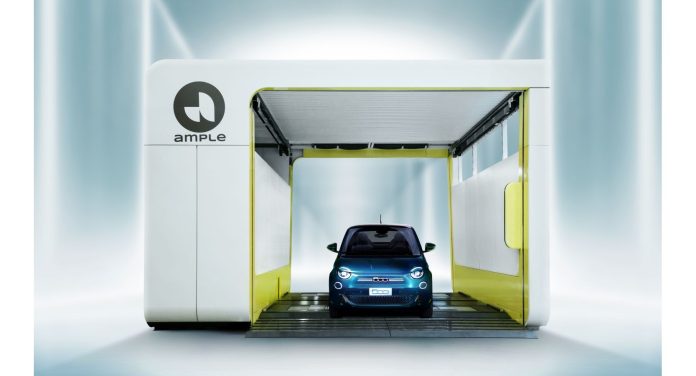The upgrading of agricultural machines and equipment, which includes the race to their higher sustainability, is the issue of a tender in the RRNP’s ambit, which involves 15 regions of Italy, Lombardy included. For the latter, 26 million Euros have been made available for local companies and applications can be forwarded by March 29th, 2024. The tender addresses agro-mechanical companies, agricultural micro and SMEs, and their cooperatives and associations. The subsidy provides for a capital contribution up to 65% of the expenses deemed eligible and, in the case of young farmers, the subsidy is increased to 80%.
The various items also include replacing off-road vehicles, such as tractors, for agriculture and livestock that satisfy the requirement of being equipped with an electric or biomethane engine.
Tender for the electrification of agricultural machines
3D printing of components for electric motors: the turnover of the iron-silicon powder
Thanks to Soma (Lightweight Solutions for e-Mobility by AM for Soft Magnetic Alloys) project, funded by the European Union and supported by EIT Raw Materials, Elkem, a manufacturer of silicon-based materials, has developed an iron-silicon powder intended for the 3D printing of components for electric motors.
The developed iron-silicon powder is characterized by its exceptional soft magnetic properties, which makes it ideal for application in electric motors: user-friendly magnetization and demagnetization are fundamental for the efficient operation of these motors.
The powder, manufactured in small batches using an atomiser by Future Materials, the Norwegian Catapult Center at Kristiansand, has already been used successfully to print 3D components intended for electric motors, and quality estimates and prototype manufacturing followed the process.
The powder, a key product of this initiative, is now on the market thanks to Elkem, which is assessing its potential for production on a commercial scale. Currently, it is available in small quantities for test purposes.
The made in Apulia electric satellite is in orbit
Manufactured by Sitael at Mola di Bari, part of Angel Holding, MicroHETSat is a full electric satellite. Manufactured on behalf of the European Space Agency, MicroHETsat weighs 75 kg and it is equipped with a plasma motor, a sort of low-consumption space lift. The mission has been enabled by the investment of the Italian Space Agency through a contract with the European Space Agency – ESA. Through specific measures of support to innovative enterprises like Siatel, the Apulia Region has allowed the implementation of some prototypes of the satellite subsystems and part of the factory where MicroHETSat was born.
«All key elements of the satellite, from the on-board computer to the control system, from solar panels to power supplies and electric thrusters have been implemented by our engineers and technicians – commented Marco Molina, Managing Director Sales and Products of SITAEL -. Satellite operations are now in full swing and successfully go on from the operational room in SITAEL headquarters in Forlì».
EuroGroup Laminations inaugurates a new plant
EuroGroup Laminations strengthens its international ranking by inaugurating a new manufacturing plant for the EV market in Mexico, at Querétaro, with an investment to be made worth about 50 million Euros. The new plant adds around 10,000 sq.m. to the Group’s production park in the Country (21,000 sq.m. already existing) to more than double the manufacturing capacity for the EV & Automotive segment in the next two years.
The new site at Querétaro enriches the manufacturing park of EuroGroup Laminations on a global scale, as it is now composed of 13 factories, seven of them in Italy and six abroad – two in Mexico and two in China, one in the United States and one in Tunisia – and it will be central in the execution of the Group’s order book for the EV & Automotive segment, which in October 2023 reached the record amount of 6.4 billion Euros.
The Group has undertaken an additional site development programme: they are about 10,000 sq.m. for the EV & Automotive segment that joins the already existing 21,000 sq.m., with a 43% enlargement of the covered surface. The new plants have been built in compliance with the highest standards of innovation and sustainability, with a particular highlight on decarbonization, circular economy, and education, reaping the fruits of the Group’s consolidated expertise as a market leader.
The expansion of the production site in Mexico marks a new fundamental step in the growth course of EuroGroup Laminations with the foreseen doubling of the manufacturing capacity installed for the EV segment, further consolidating the market leadership.
“We are proud of inaugurating the new Mexican plant at Queretaro and of so strengthening our production capacity for the North American EV market for a fast growth at the service of already received job orders worth over 3 billion and a half Euros to be delivered from 2024 to 2028”, commented Marco Arduini, CEO of EuroGroup Laminations. “We work based on a growth plan that will allow us to increase production while shortening manufacturing times. Moreover, we invest in new forefront processes and technologies to grant unique solutions and the highest qualitative standards.”
Carpanelli presents the self-braking motors with rectifier
Recently, the manufacturer Carpanelli has informed us that all series of its electric motors are available in self-braking versions, too. “The brake can be in both alternate and direct current. The DC brake can be used as a standard brake or as a holding brake. The braking group can be associated with Carpanelli electric single-phase, three-phase, or double-polarity motors”, the manufacturer explained in detail.
In the press release, we can read that in the industrial field, or automation systems, it is common to find mechanical braking systems coupled on the axis of asynchronous motors. “These brakes are generally operated by an electromagnet, with power supply derived from the same power supply line of the motor. When the power supply is cut, the brake closes due to the springs installed in the brake unit, creating a constant braking torque. This type of electromagnetic brake is generally of disc type: coupled to an asynchronous motor, it creates a single system called a self-braking motor, including a three-phase or single-phase asynchronous motor. The electromagnetic-type brake may have its coil powered by direct current or alternating current, depending on the typology. If the electromagnetic brake coil must be powered in direct current, a suitably sized rectifier bridge is used”.
Speaking instead of a rectifier, it can generally be housed inside the motor terminal box, or outside the box, screwed like a cable gland. “This type of rectifier shows some peculiarities: it satisfies the task of rectifying alternating voltage into direct voltage and it incorporates protection devices against overvoltages. Rectifiers can have 4 or 6 terminals, or PG with wires, through which the connections to the electromagnetic brake coil are carried out”, Carpanelli specifies. “Self-braking motors assure utmost safety, precision, and reliability. They provide a control in locking phases and are mainly used to: reduce machining times by lowering machine slowdown times; carry out parking; satisfy the requirements connected with safety regulations”.
STILL enlarges its electric offer

The protagonist for over 100 years with intralogistics solutions, STILL has decided to widen its range of products by proposing two specific lines to the market: the new ‘Classic – Line’ and the consolidated ‘Xcellence –Line’. Some of the forklifts already present in the current STILL range are now part of the new C-Line: for instance, the series of RCE 25/35 electric fronts released by the company in April 2023, characterized by notable energy efficiency, low battery consumption, and reduced maintenance.
Moreover, the C-Line includes also ECH pallet trucks with capacities of 1200 and 1500 kg and the possibility of choosing the ECH 15 model with 48V battery and stabilizing wheels. The C-Line range includes also ECV lifts with a loading capacity of 1000 kg, available in different configurations, such as simple and telescopic columns and with initial lift. Still by Still comes an emblematic piece of news that represents a step forward in the modernization and electrification of handling operations for the flight ambit.
They have recently delivered an electric STILL RCE 30 forklift to the flight department of the State Police: equipped with a high-performance AC motor, excellent 360-degree visibility, and the option of automatically regulated speed in a curve, it has been chosen to grant operational efficiency, without polluting.
Xiaomi launches its electric motors
With the vehicle project Xiaomi Su7, Xiaomi intends to integrate the automotive industry with consumer electronics and smart ecosystems to redefine completely the automotive industry, making great strides in its technological survey. It is what the brand has recently announced and for which it will invest over 10 billion Chinese Yuan.
The fruit will be three electric motors, developed and manufactured independently: HyperEngine v6, HyperEngine v6s, and HyperEngine v8 that, as affirmed by the manufacturer, will establish new standards: HyperEngine v8 will have a maximum speed of 27,200 rpm, a power of 425 kW and a peak torque of 635 Nm. To allow such results, Xiaomi will use an ultra-resistant silicon steel plate, with a tensile strength of 960 Mpa. Moreover, in the research and development of materials, Xiaomi has developed Titans Metal, a die-cast material featuring high resistance, high resilience, and heat treatment. The technological forefront will be mirrored in the vehicle: Xiaomi Su7 will reach a 0-100km/h acceleration in just 2.78 seconds, steadily ranking in the club of supercars under 2 seconds, and able to reach a maximum speed of 265 km/h.
Speed record for an Australian electric motor
The professor Rukmi Dutta and her team of the University of New South Wales, in Australia, have developed a new electric motor that works at high speed and uses less energy, which definitively means less pollution.
Rukmi has innovated and improved the existing IPMSM, which have different characteristics that make them highly performing electric motors, decreasing their environmental impact.
The integration of magnets inside the rotor generates more torque: the cylinder turns not only owing to the interaction between magnet and alternate current, but also because of the additional rotation caused by the rotor material’s resistance to the magnetic field, a property called “magnetic reluctance”. These machines can also operate at high speed without needing much power, which means that the smallest IPMSM can perform the same quantity of work as other bigger motor types. Besides, compactness is a key factor for the use in cars and aircrafts, where space and weight capacity are limited. The developed motor, not longer than a pen and with the diameter not bigger than a coffee cup, can reach 100,000 rpm and the nominal power is 5 kilowatts.
Ansys, the importance of tests for electric motors
«We rely so much on electric motors that we often notice them for the first time when they are broken: a problem that can be absolutely prevented, through the tests on electric motors», writes Ansys in a press release, giving broad room to the importance of tests on electric motors carried out during all phases of their lifecycle. Even if the specific tests executed will vary according to the complexity of the motor, of its application and of the parameters to be assessed, some of the key tests used during the tests on electric motors include electrical tests such as polarity checks and voltage level measurements and vibration tests to detect any imbalances or misalignments.
There are also thermal tests to monitor the motor’s temperature to avoid overheating, dynamic tests to see how the motor performs in transient states, noise tests to evaluate acoustic characteristics against sound standards and, finally, insulation tests to ensure the motor’s insulation materials won’t degrade while operating.
In each application where electric motors are used, from industrial compressors to dental drills, tests validate that a motor satisfies the specifications established by the manufacturer and the quality and safety parameters determined by sector standards.
On a world scale, standards such as interoperability and safety are consistent according to each single Country, while local standards can include requisites that acknowledge the Country’s specific priorities, such as environment and culture.
A following step? The use of simulation in the tests on electric motors improves the speed, the efficiency of the test process itself, the quality, the depth and the reliability or certainty of the collected data. Simulation software like Ansys Maxwell and Ansys Motor-CAD can perform coupled multi-physical calculations, providing technicians with in-depth estimates of complex systems, evaluations that would be unfeasible with a test at a time.
Stellantis and Ample together for the battery exchange
For the charge of its electrical vehicles, Stellantis has established a partnership with Ample to use its exchange technology of battery modules, able to grant a complete charge in less than five minutes. Following the signature of a binding agreement, the subject of the collaboration is the integration of the Modular Battery Swapping solution by Ample in Stellantis electric vehicles, a technology that allows supplying energy to electric vehicles similarly to the refuelling.
“The battery exchange technology allows the owners of an electric vehicle to replace the discharged battery with a one fully charged in few minutes, making a stop inside an exchange station”, Stellantis explains in the press release.
When an electric vehicle equipped with Ample technology approaches a station, which can be installed in public areas in just three days, it is immediately recognized by the station itself. When we enter and we stop inside, the driver starts the battery change from the application, obtaining a battery with complete charge in less than five minutes.
The pilot programme will start in 2024 from Madrid and will concern a fleet of 100 Fiat 500e used in the service of car sharing Free2move by Stellantis. The car has not been chosen randomly: Fiat 500e is the best-selling Stellantis electric vehicle in the world.
“In Ample we believe that making electric vehicles accessible to all without compromise is the only way to achieve a significant impact on the reduction of emissions. The ambitious electrification targets by Stellantis, their range of electric vehicles and the managerial team’s commitment make Stellantis a perfect partner to hit our targets. The offer of competitive electric vehicles that may also receive a complete charge in less than five minutes will contribute in removing the constraints that still hinder the diffusion of electric vehicles. We are looking forward to working with Stellantis to implement our common solution”, declared Khaled Hassounah, CEO of Ample.









